Parents often reach out to us when their child is placed in a self-contained classroom, when they need special needs tutoring or help with IEP advocacy.
In regards to the self-contained classroom, they want to know if it is the best placement for their child. So let’s break that down.
Public schools have a diverse and unusual role in a child’s education. They are in charge of teaching the basic concepts of learning and letting children know how to behave in a social setting.
Of course, these are just a couple of the duties a school has to undertake. However, when you throw special education into the mix, things can get stressful for a traditional school system.
Over the last few decades, the general school system’s infrastructure for special education has slowly been crumbling. Schools are rushing to keep up with an increasingly diverse student population. And it has been struggling ever since.
More and more children are becoming school age in this time of exploding populations. As this happens, schools can’t keep up with the incoming flow of children. This means redefining how special education services will fit into the new structure.
What is Special Education?
“Special education” refers to the public school’s obligation to provide a free and appropriate public education to children with disabilities. Most children receive these services in the student’s zone school. But some children receive their special education services in specialized programs at special schools.
However, the way schools provide special education is different from school to school. Some schools have still not caught up with the concept of special education.
At these schools, everyone is included in the general school population and given the same opportunities across the board, regardless of limitations. But supportive services are provided to help with individual accommodations.
Other schools rely on partial inclusion of children with special needs to serve this school sector best. This gives the special needs child a small part of the day with other children while doing certain activities or subjects.
And then, there are self-contained classrooms.
What is a Self-Contained Classroom?
One concept in public learning environments is called the self-contained classroom. On average, regular classrooms have anywhere from 20 to 30 students. That gives children a good part of each school day with a group of their peers.
For children with special needs, this can become overwhelming and possibly cause them to fall behind in their learning and work. The self-contained classroom focuses on the idea of smaller groups, a more close-knit environment, and one-on-one attention. This can help children with special needs feel safe while fostering creativity and learning.
How Many Students Are In a Self-Contained Classroom?
These groups typically consist of 5 to 10 students and are run by a special education teacher and paraeducator, who takes instruction from the primary teacher. But not all school districts have a paraeducator in the classroom.
What Type of Students Are In Self-Contained Classrooms?
They can cater to a specific group of children with the same disability or learning needs or a mixed group with unique abilities.
This alternative classroom setting provides support and structure for children whose educational needs are not met by general education. This can be an excellent choice for schools with a special education program.
When Were Self-Contained Classrooms Established?
While the concept of a smaller classroom environment has been around for decades, it wasn’t until the No Child Left Behind Act was signed into legislation in 2002 that self-contained classrooms rapidly grew in popularity.
The law states that schools need to be held accountable for more issues than they had been previously. And they should provide a standardized education to all school-age children.
Schools that might have had a lax special education program were left scrambling to update their school’s infrastructure so it could accommodate more children with special needs while providing a higher quality of education.
Standardized Testing
In addition to the increased accountability, schools have to provide standardized testing for all school-age children to help rank and rate the school’s performance.
Suppose a school participates in the full inclusion method for children with special needs. In that case, their overall test scores will be lower simply because all grades, regardless of learning disabilities, counted towards an overall rating.
Primarily for this reason alone, more schools started to use the self-contained classroom method of teaching to separate special education test scores from those of the general population.
Disadvantages of Being In a Self-Contained Classroom
In the past, children who had special needs spent the entire school day in a separate setting from their peers. This helped add to the stigma that there’s something “wrong” with students who have special needs.
Students who are severely disabled or extremely disruptive might still spend their day isolated in their own classroom setting. But now, many schools try to combine the self-contained classroom with regular class interactions. This helps to balance the inherent work and social ratio.
Placing select children with special needs into a regular school setting is incredibly important to their self-esteem, confidence, and overall ability to handle social situations.
Unfortunately, this might not always be possible for children who are limited in their scope of disability. Still, supervised interactions during the day can do wonders for a child’s sense of self.
It’s essential to let these children know that there is nothing wrong with them. They simply learn at a different pace from the others. And this makes them unique.
Everyone should emphasize a child’s talents, not their shortcomings. This is why self-contained classrooms offer a welcome respite from the jungle that can be elementary, middle, or high school.
How to Decide What is Best for Your Child?
Deciding whether a child should be in a self-contained classroom should be driven by what the student needs to progress on their academic goals.
The team should look at a few things such as:
- IEP goals
- Supplemental aids and services
- Special education service hours
- Whether you can successfully implement the IEP in the general education setting
For example, a student with a lot of supplemental aids and services which require a lot of one-to-one attention from the teacher might not be able to be implemented in the general education setting.
There can be a difference of opinion from parent to school about which services the child with special needs should participate in. Hence, it’s essential to keep an open and honest channel of communication between you and the teacher regarding your child’s best interests.
IEP services can be successful in a self-contained classroom. However, whether this educational setting is suitable for a student depends on their individual needs.
The IEP team should discuss a student’s access to students without disabilities if they consider a self-contained placement for a student. The correct placement for one student might not be suitable for another. All should take placement decisions seriously and consider the IEP.
Additional Resources for Your Child
Special Education Resource offers customizable lesson plans, one-on-one tutoring, and educators with years of special education experience. We want to see your child succeed on their path to better education, so feel free to browse our site, read other articles to gain insight, and please let us know if we can help you with a subject that might not be listed.
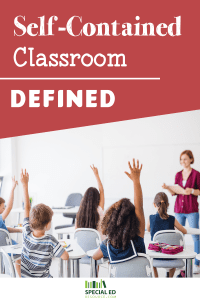

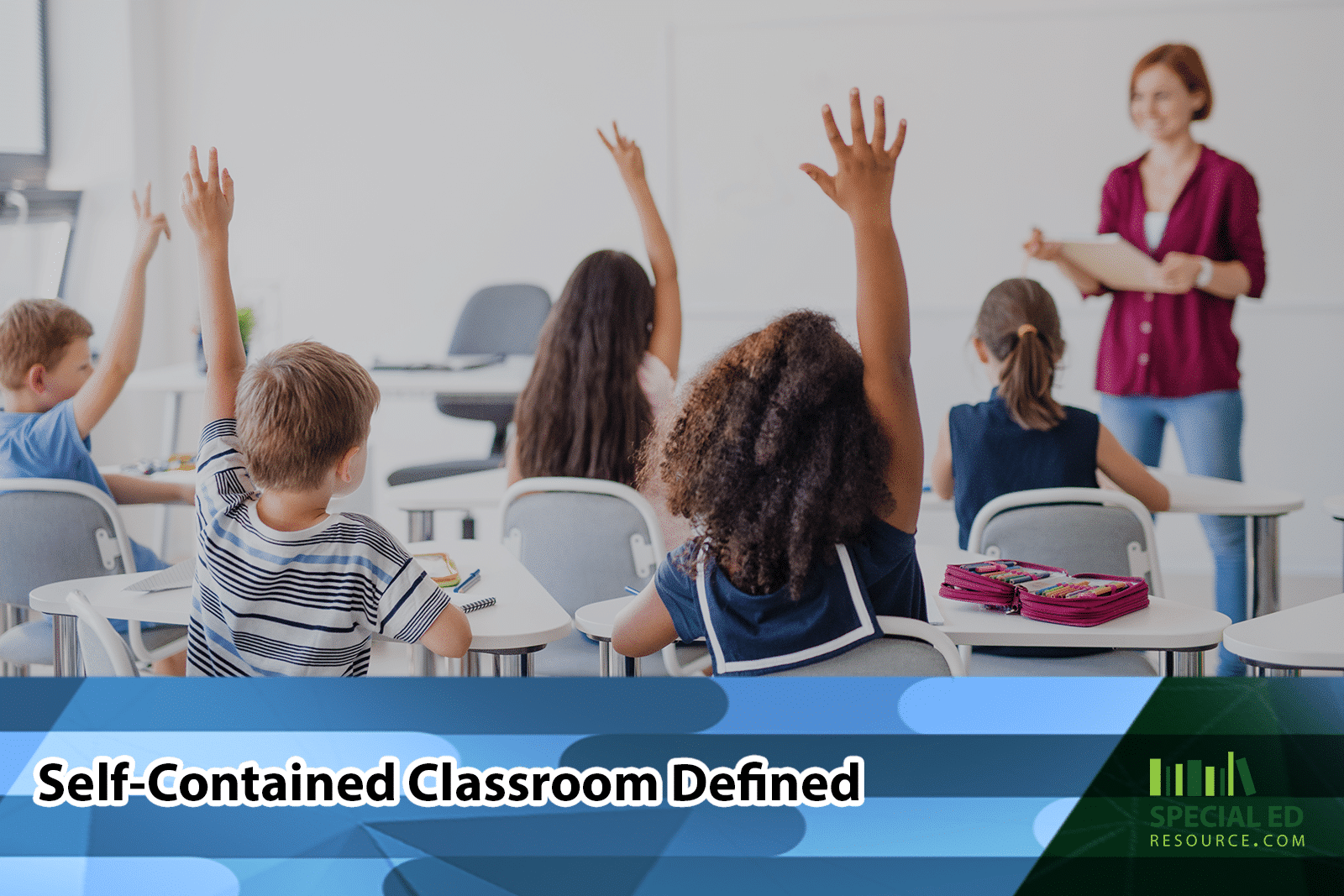

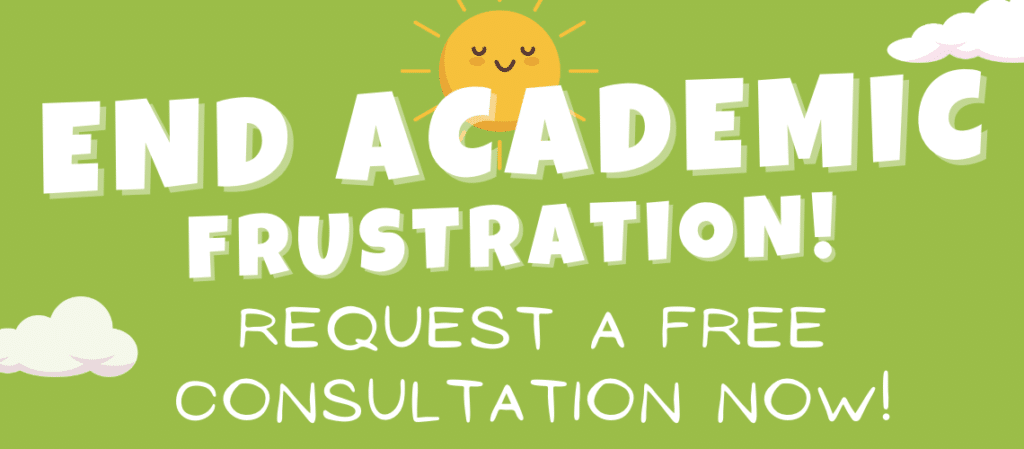


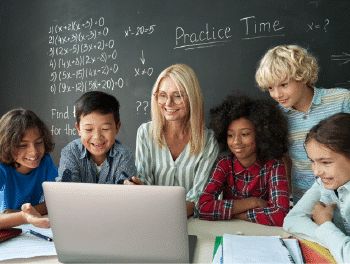



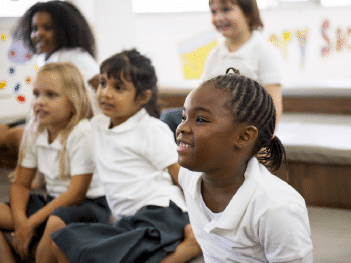


31 Comments
Great information for people who are currently taking special education classes.
My grandson is in a special needs classroom in the 5th grade. He’s doing early 4th grade work and struggling. How can it be fair that they test him with the regular 5th grade classrooms. He’ll always fail. How is this tolerated. We’ve already gone to the teacher, principle, school board. No help
Mary… I’m so sorry to hear about the struggles your grandson is facing in school! Unfortunately, this practice is VERY common throughout the education system! I would love to discuss potential options and dive into more detail if you’re available? Please email me and let’s set up a time to chat. – [email protected] Thank you so much Mary!
I have a 13year old in 8th grade. our school has a self contained and a resource room/support program. the school had an incredibly hard time adapting too that my son was basically borderline both… he has the academics of a self contained student but no physical delays and is able to understand a little more. but I”m finding that maybe based on his 1st/2nd grade level reading writing and math he should be self contained due to his severe delay. however at this school, there are students his age with worse delays which he isnt use to. he’s traditionally the slowest. also the school states oh our self contained students dont attemd science or social studies classes… they also are monitored even if they dont need it. for example my son was met by an aide as he gets of the bus and can only sit with the other self contained classroom students, and at lunch the same, they arent allowed to mix with other non special ed students hardly at all. and then they wonder why he get cant get along with peers very well
Suzanne… Thank you so much for reaching out! I have a few questions for you… Does the school offer any other options for your son? Does his IEP state that he has to be in a self-contained classroom setting? Do they have inclusive classrooms where he can be in a regular setting with accommodations and extra help from a special education teacher? I don’t understand why he’s not able to learn in another type of classroom other than self-contained. Typically self-contained classrooms are for students with more behavioral concerns not academic. I would love to get more information from you and help in any way possible. Please contact me at [email protected] Thanks again Suzanne!
Suzanne,
Reading that your son has not been given the chance to be with the general population angers me. The school I am at paraprofessional, encourages our special needs students to interact with the general education students. Through the school and staff encouragement we see a larger acceptance of our special needs students. One of our Seniors who graduated this year served on student council for his 3 years at the high school. Our state has mandated that “all” students must take certain general education classes to graduate. These students usually have a parapro in the classroom to help. Our students have been accepted in these classroom as well due to special needs students being in the general education elective classes throughout their public education years. I hope that your sons school will open their eyes soon.
Is there a law states a student can a student be put in a Self Contained classroom due to only having a physical disability? This goes against the ADA. I’m now 24, but when I was 8 I was put in a Self Contained class due to being a wheelchair user. When my IEP was done I tested average for my age and grade. At 8 I could read, write, add, subtract, multiply, and divid as well as my peers in General Education. I was put in a class where none of the students were able to write their name or knew the alphabet. There is of course nothing wrong with the children in the Self Contained class that were at a lower cognitive level than I was. As an adult I love working with children in Specail Ed. My point is that it is wrong to put a child in Specail Ed, and not allowing them into any mainstream classrooms due to requiring a wheelchair. Your above description does state that a child could be placed into a Self Contained classroom due to a physical disability. I hope you meant a physical disability that can effect cognitive function such as, Cerebral palsy. Putting a child in Specail Ed due to a physical handicap goes against the ADA. I hope you can help ensure me that in 2017 this isn’t still happening to handicapped children, when it was supposed to stop in the 70’s. I also hope that the text in the definition of who requires a Contained Class setting is corrected, or schools will use it as a means to say physically handicapped children do belong in Specail Ed/Self Contained classrooms. Thank you you taking the time to read about this matter.
Question…. I am an itinerant pre K special education teacher. I serve some students that are in kindergarten (age 5) that have not been tested for “big kid IEP”. I would like to pull these students to a room where I can work with them in a small group. Would that be considered a SEE environment? My struggle is that when I go into the kindergarten classrooms to provide IEP services, I am more of a distraction to the entire class.
Very interesting article! question about the size of self-contain/sp. ed. , in NJ, what is the limit by law?
Hi my
Htandchildbis 13. He seems to
Not
Be connecting with what is right or wrong acceptable behavior in school. He had an incident last eeek where he pulled the firebala
And some classmates had to
Evacuate the classroom. He does not know why he did it? He also will
Just get up
From his seat and the classroom
And walk around. My daughter is meeting with orinciplalnsoon. We are concerned about his actions. Thank you she is putting him into therapy. Gretchen
I am a teacher in a self contained classroom with 8 students that are with me about 90% of their day. My school district is now planning on having me also be a resource room teacher for general ed kids on IEP’s. They say they are now calling my classroom an LRC and I can have up to 16 students. This does not seem right to me. Does anyone know if this is legal?
I am a teacher in a self contained classroom (15 years). There are also resource room teachers that pull students from gen ed. Currently the resource room teachers are over their student limit by 8. My district has said that I must be their instructor along with having my md class. Is that legal?
My 10 year old son who has been diagnosed as autistic With adhd sever anxiety disorder and pervasive declining disorder just started 5th grade. He is failing in all classes and is being severely bullied and physically assualted at School daily but the School says he doesn’t qualify to be in a self contained classroom bc he is too smart. I have tried talking to the principal and the teacher and his doctors. But I am having no luck. I have to send him to school and he cried everyday begging me not to send him. I am at a loss and do not know what to do. Any recommendations would be greatly appreciated. Thanks
What are the qualifications to become a self contained class room special education teacher and right now working in a public school as a spl education teacher aid with paraprofessional license.. my question what other endorsement do I have to take to become a self contained class room teacher … will be eagerly waiting for your reply. Thank you.
Can a Student with a Learning Disability be moved to a self contained Behavior Unit without a FUBA or other documented data in an IEP?
My son is currently in a self contained classroom that consists of second and third graders. Next year the district wants to combine kindergarten thru third grade into one class. This seems like a wide gap not only in age and maturity but in the curriculum that needs to be taught. Do you have any thoughts about this?
How can I find out what is the teacher-student ratio, or what should be, legally the student teacher ratio in a class of 7 children, who have downs-syndrome and autism. Also, should there always be a paraassistant inside the classroom with the regular teacher? What happens if this is not the case, in other words, substitutes are used sometimes in the classroom and sometimes the teacher is on her own. This is in the state of NJ.
Love the article p
Can you do pros and cons with inclusion vs. self- contained classrooms please?
Hey Laurel,
Check out our Video on Self Contained Vs. Inclusion.
https://www.youtube.com/watch?v=4NlvQasaWPo&t=365s
See if this video provides more information and answers your question!
I am a teacher consulting with a general special education school in rural mexico. The school began to serve all special needs children in the community. Now the school wants to make some changes in deciding who they should serve. There is another Life skill, non literacy program option that some of our of the present students can attend.My school wants to serve special needs students with an academic focus. There is a regular school students will also be integrated into part of the day. I have been asked to provide some type of criteria to decide who we will serve in the future. Are their standards already that would help us?
My daughter is 5 and we have been struggling to define her disability. It started as “apraxia” but that didn’t fit, it then morphed into Motor/Processing Speech Delay and was then pushed out to “Global Delay” … She’s been tagged as having a Developmental delay but that isn’t quite right either.
The one truth is that she is a gregarious social butterfly who loves to be in charge. She is not shy nor afraid of anything.
At age 4 we left a Pre-K program (being told they couldn’t meet her developmental needs) at age 5 we made it through a Kindy program only to feel like she needs to repeat it.
I desperately want to keep her in the general education population, but I am wondering if I need to push for a self-contained classroom. The reason is that testing is showing that she cannot process information given verbally at the standard rate. Her private SLP wants to see direct instruction. Her CELF testing puts her at 0.5 percentile for language reception.
Kimberly… I would start by contacting an educational diagnostician for more of a recommendation. As a Special Education teacher, I understand your concerns and the struggle you’ve had to go through.
At five years old, it is tough for testing to show a specific disability. In the district I worked in (this may vary by state), students under age seven are labeled developmentally delayed unless there is outside testing.
Students are re-tested before they turn eight years old and are given a more specific disability. Start with the teacher (which I know you have). If the services do not seem to be helping her, you could always push to have her placed into the collaborative services as she may benefit from having both collaborative and resourced services.
I hope this helps! Without all of her testing information, it’s hard to make an accurate recommendation and suggestions of specific interventions you could try. You can email me as well (maybe easier). [email protected]. Thank you so much, Kimberly! Hang in there… you’re doing the right things!
Someone looking to be a special education teacher, how would he/she approach an opportunity as a self contained SE instructor?
Hi there.
I’m trying to find any state laws that are related to student teacher/para ratio in an SLC of students with very high and extreme behaviors all dx with EBD.
Washington State. Clark County.
Hello all. I have a 5 yo who is currently enrolled in a special education classroom due to some delays. My daughter was born with low muscle tone which has delayed her physical ability and speech. She is able to understand and communicate very well, but she is still struggling with saying complete sentences. As far as her physical ability to be independent…. she still needs assistance with balance. Walking on a beam or jumping off things, she cannot do. She doesn’t have a behavior problem at all, I have been inside her classroom of 12 kids k-2nd & only 2 have behavioral issues, the others are autistic. My daughter is very social, loves to laugh, joke around, & have fun…. but in class she’s very quiet & gets a little scared from all the noise (hand clapping, & screaming)… so she chooses to wear headphones. Her school has inclusion during lunch and pe, but the Pe coach doesn’t allow the kids to participate, bc “they disturb the GE students” (which I do not agree with) she they play on the playground instead. Should I voice my opinion to the principal? How do I know if my daughter is in the right classroom ? How do I go about she having the best schedule to fit her needs?
Ashley… does your daughter have any accommodations written into her IEP specific to PE?
No ma’am she does not.
That would be the first thing I would push for! Take a look at this resource in understanding IEP goals and how they’re set; https://youtu.be/F_d5_tV1LU8 Getting a goal created around this will FORCE the PE teacher to accommodate your daughter. Let me know if you have more questions about this…
Great article on the brief history of self-contained classrooms and an overview on the general school system’s infrastructure for special education. Thanks for posting!
Are there any laws, statutes, policies, or regulations that define, limit, or prescribe how many students can or cannot be in a specialized unit? “These groups typically consist of 5 to 10 students and are run by a special education teacher and paraeducator, who takes instruction from the primary teacher.” – That sounds great, but I have yet to see anything that says that classes have to be that small. Our specialized unit classes for preschoolers has been increasing over the last few year, without adding any additional staff, but I can’t find any official documentation to protest this.
Thank you